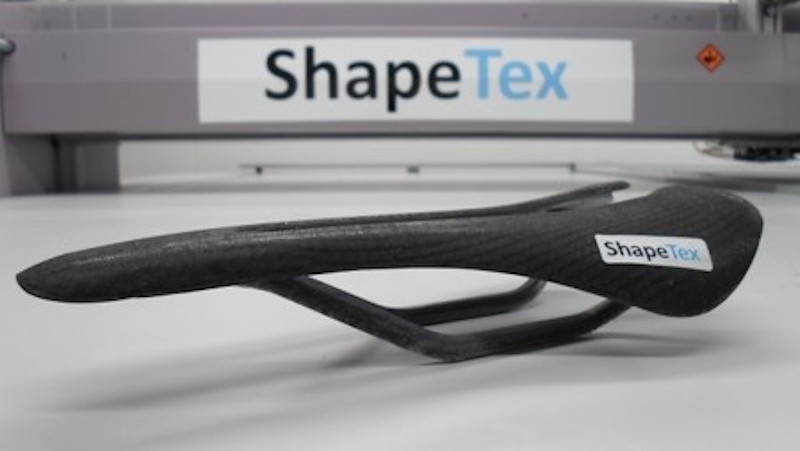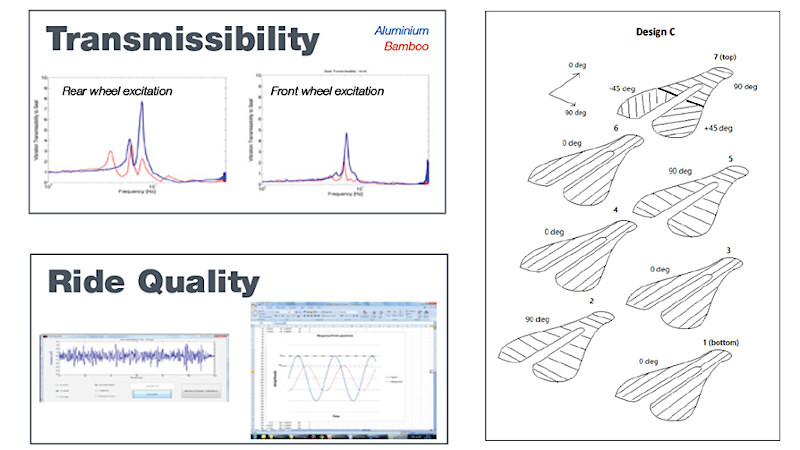The process uses carbon fibre and nylon commingled yarns that are embroidered onto a nylon carrier film to produce a net-shaped preform.
This can then be press moulded in less than 5 minutes under high pressure and at high temperatures to produce the saddle.
A prototype, developed through an industrial collaboration with Witney-based Shape Machining Limited, is just one third the weight of an equivalent conventional saddle.
As part of the process, the team modelled a variety of designs to arrive at the optimum shape and fibre orientations with the aim of maximising strength and informing laminate design. Mechanical properties were determined by simple pull-tests of unidirectional carbon fibres specimens that were manufactured using the ShapeTex™ process.




